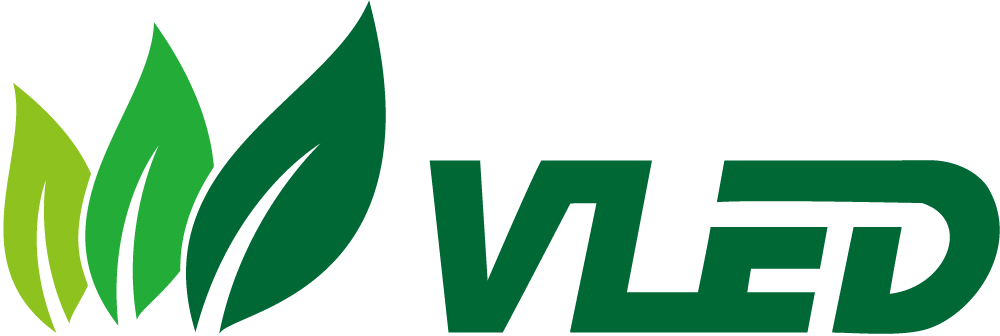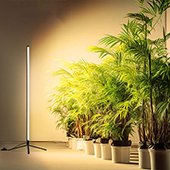Menu
Does the Cost of Grow Lights Prohibit Hydroponic Growing?
Indoor hydroponic cultivation is not merely a romantic vision of urban oases; it represents a wise solution to the global challenges of food security and resource scarcity, an achievement made possible by the rapid advancements in indoor hydroponic technology.
By recycling water and nutrients, this technology significantly reduces reliance on land and water resources, contributing a vital stroke to the blueprint of Earth’s sustainable development.
However, a question lingers for aspiring investors in this field: Are LED grow lights an indispensable tool for indoor hydroponic growing? In other words, can hydroponic endeavors flourish without the aid of LED plant lighting?
This query merits thorough examination. LED grow lights, with their efficiency, energy-saving capabilities, and adjustable spectra, create nearly ideal lighting conditions for plant growth, vastly enhancing both the efficiency and quality of crop production.
Nonetheless, this comes with a certain financial investment. Thus, our discussion turns to the role of LED grow lights in the pursuit of efficiency and sustainability: do they act as catalysts propelling progress or obstacles hindering the path?
Table of Contents
Is It Necessary to Use LED Grow Lights for Hydroponic Growing?
When exploring whether or not you must use LED plant lights for hydroponic growing, there are a few ways to gain a deeper understanding.
Comparison of Using vs. Not Using LED Grow Lights
Without the use of LED grow lights, plants predominantly depend on natural light or conventional lighting systems. This reliance can lead to an extended growth cycle because the light duration and intensity often fail to meet the optimal requirements for plant development.
Conversely, LED grow lights are designed to emit a consistent and tailored spectrum that mimics the ideal light conditions necessary for plant growth. By doing so, they can reduce the growth cycle and expedite the maturity of plants.
The absence of LED lighting may impose constraints on crop yields due to insufficient illumination. Specifically, tomato crops cultivated under LED grow lights have demonstrated yield increases ranging from 20% to 50% compared to those grown under typical indoor lighting setups.
Furthermore, the precise wavelengths emitted by LED grow lights promote enhanced pigment accumulation in plants, leading to more vibrant fruit colors and elevated vitamin content.
For Vegetables with Lower Light Demands in Hydroponics
Leafy greens such as lettuce, spinach, and Chinese cabbage have relatively lower light requirements. They can thrive even under weaker, diffused indoor lighting conditions. Nonetheless, basic LED grow lights are still effective in enhancing their growth, ensuring healthy and robust produce.
Hydroponic Fruits and Vegetables That Benefit from LED Grow Lights
Fruit Crops: Strawberries and cherry tomatoes, for example, have higher demands for both light intensity and duration. LED grow lights play a crucial role in providing ample light for photosynthesis, which is essential for enhancing fruit sweetness, color development, and overall yield.
Root and Tuber Crops: Plants like hydroponically grown potatoes and beetroot necessitate strong light during their growth cycles to stimulate the development of tubers or roots. LED lighting ensures these underground structures develop properly.
Herbs and Spices: Herbs such as mint and basil are particularly sensitive to light conditions. LED grow lights are instrumental in maintaining the intensity and quality of light needed for these plants to grow vigorously and develop their full aroma profiles.
Although not all hydroponic crops absolutely necessitate the use of LED grow lights, in indoor hydroponic systems striving for high efficiency, premium quality, and continuous year-round production, LED plant lights have become an indispensable component.

Cost Considerations: Economic Analysis of LED Grow Lights
When we are talking about the application of LED plant lights in hydroponic planting, cost is an inextricable topic.
From acquisition to operation, every step of the process needs to be carefully considered to ensure that the investment is reasonable and beneficial in the long term.
Acquisition and Operating Costs of LED Plant Lights
Acquisition Cost: The price of LED plant lights varies depending on their power, spectral coverage, brand, and other factors. The initial investment in equipment may be a considerable expense for small farms.
Energy Consumption: LED plant lights consume significantly less energy compared to traditional plant lights, typically in the range of a few to several tens of kilowatt-hours per square meter per day, depending on the type of crop and stage of growth. The energy savings translate into direct savings on electricity costs over long periods of operation.
Maintenance costs: LED lights have a long service life, generally up to 50,000 hours or more, but regular cleaning and replacement of aging parts are also necessary, which is not expensive but should be included in the long-term operating costs.
Depreciation costs: As a fixed asset, depreciation of LED plant lights also needs to be considered and is usually apportioned equally to annual or monthly costs based on their expected life.
Impact of planting size on cost sensitivity
Small family farms: at smaller planting scales, fixed costs per unit area (e.g., purchase of lamps) account for a high percentage of the cost, making it more cost-sensitive. However, family farms can often make use of unused space, reducing rental costs, and the labour is mostly family members, reducing labour costs.
Large commercial operations: Scale production can dilute fixed costs per unit area and improve overall cost-effectiveness. Although the initial investment is large, the application of efficient management and automation technology can significantly reduce operating costs and achieve quick returns.
Geographical Differences in Electricity Costs
Globally, electricity prices vary significantly from country to country, which is a cost factor that cannot be ignored for LED plant light applications that rely on electricity for hydroponic planting. Below are the average electricity prices for selected countries in 2024.
Norway – approximately $0.04;
United States – approximately $0.09;
Germany – about $0.12;
Japan – about $0.13;
United Kingdom – about US$0.16;
Canada – approximately US$0.10;
Australia – approximately US$0.22;
China – approximately US$0.09;
India – approximately $0.04;
South Africa – about US$0.06;
In countries with higher electricity prices, hydroponic growers may need to focus more on energy efficiency, choosing energy-efficient LED lights and optimising light management strategies to reduce the burden of electricity bills.
In contrast, countries with lower electricity prices may have a greater cost advantage for power-intensive hydroponic growing projects. Therefore, understanding and taking into account these geographic differences is critical to developing a cost-effective hydroponic farming programme.
What I Want to Say
In conclusion, investing in LED grow lights might seem financially daunting at first for hydroponic growers, as quality equipment often comes with a premium price tag.
However, with careful planning and leveraging available resources such as subsidies and efficient operation strategies, the initial costs can be effectively managed and eventually outweighed by the long-term benefits.
Looking ahead, LED grow lights prove to be a treasure trove for horticulture. They accelerate plant growth, boost yields, and enhance product quality, translating directly into increased profitability.
With shortened growth cycles, higher outputs, and attractive produce, customer satisfaction rises, driving sales and bringing satisfaction to both the consumer and the grower.
This approach not only enriches the grower’s wallet but also contributes positively to environmental sustainability. Reducing dependency on natural resources and making hydroponic practices greener and more efficient, aligns with global efforts towards eco-friendly agriculture.
Therefore, hydroponic farmers should stay vigilant for emerging technologies and seek ways to adopt them cost-effectively. As technology advances rapidly, staying abreast of these developments allows growers to strike the optimal balance between costs and returns, fostering a future where hydroponics is not just environmentally sound but also economically prosperous.
Get in touch with us!
From custom light planning, to tailored quotes, and everything in between, our team of horticulture experts are always ready to assist.




